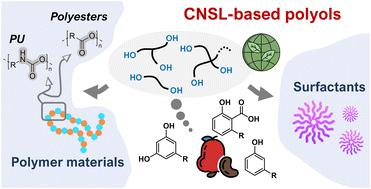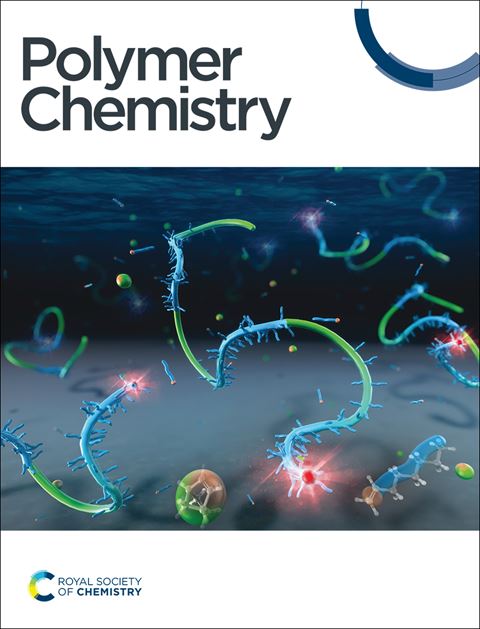腰果壳油多元醇(CNSL),尖端生物基添加剂和聚合物的基石构件
IF 4.1
2区 化学
Q2 POLYMER SCIENCE
引用次数: 0
摘要
多元醇是一种多功能分子,存在于许多聚合物材料中,通常是我们日常生活中不可或缺的物质。生物基多元醇大部分来自糖或植物油,与食品工业直接竞争。腰果酚是一种很有前景的非食用可再生资源,它直接从腰果壳中提取。腰果酚及其衍生物(卡尔德酚、卡尔德醇)的化学结构十分有趣,因此可以合成具有疏水和内部塑化特性的原始多元醇。腰果酚及其衍生物(棉子醇、棉子酚)的化学结构十分有趣,可用于合成具有疏水和内增塑特性的原始多元醇,可用于开发添加剂(如表面活性剂)或软聚合物,腰果酚多元醇正逐步在聚合物行业占据一席之地。因此,本综述将重点介绍作为各种多元醇基本成分的氯化萘磺酸。本综述将评述并批评导致以氯化萘磺酸为基础的多元醇的多种不同化学途径。此外,还将重点介绍这些以氯化萘磺酸为基础的多元醇作为表面活性剂和聚合物前体的用途,以及其特定化学结构(芳香环、长不饱和烷基链)对所生产的聚酯或聚氨酯性能的影响。本文章由计算机程序翻译,如有差异,请以英文原文为准。

Polyols from cashew nut shell liquid (CNSL): corner-stone building blocks for cutting-edge bio-based additives and polymers
Polyols are versatile molecules present in many polymer materials that are used and often essential in daily life. However, most bio-based polyols are derived from sugar or vegetable oil, and thus, their production directly competes with the food industry. In this case, CNSL is a promising non-edible renewable resource, which is directly extracted from the shell of cashew nuts. The interesting chemical structure of CNSL and its derivatives (cardanol and cardol) has led to the synthesis of original polyols with hydrophobic and internal plasticizing properties. Useful for the development of additives such as surfactants and soft polymers, CNSL polyols are progressively occupying a unique position in the polymer industry. This review focuses on the use of CNSL as a building block for various polyols. Many different chemical pathways leading to CNSL-based polyols are reviewed and evaluated. Furthermore, we focus on the use of these CNSL-based polyols as surfactants and polymer precursors and the contribution of their specific chemical structure (aromatic ring and long unsaturated alkyl chain) to the properties of the resulting polyesters or polyurethanes.
求助全文
通过发布文献求助,成功后即可免费获取论文全文。
去求助
来源期刊

Polymer Chemistry
POLYMER SCIENCE-
CiteScore
8.60
自引率
8.70%
发文量
535
审稿时长
1.7 months
期刊介绍:
Polymer Chemistry welcomes submissions in all areas of polymer science that have a strong focus on macromolecular chemistry. Manuscripts may cover a broad range of fields, yet no direct application focus is required.
 求助内容:
求助内容: 应助结果提醒方式:
应助结果提醒方式:


